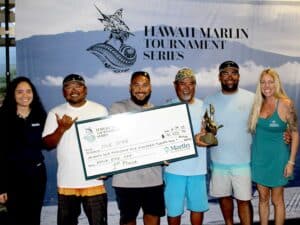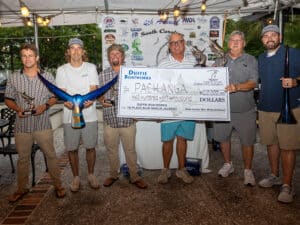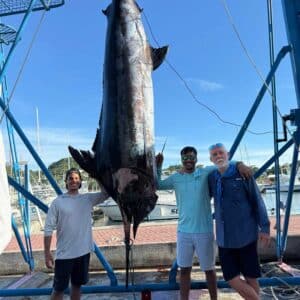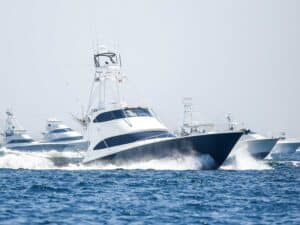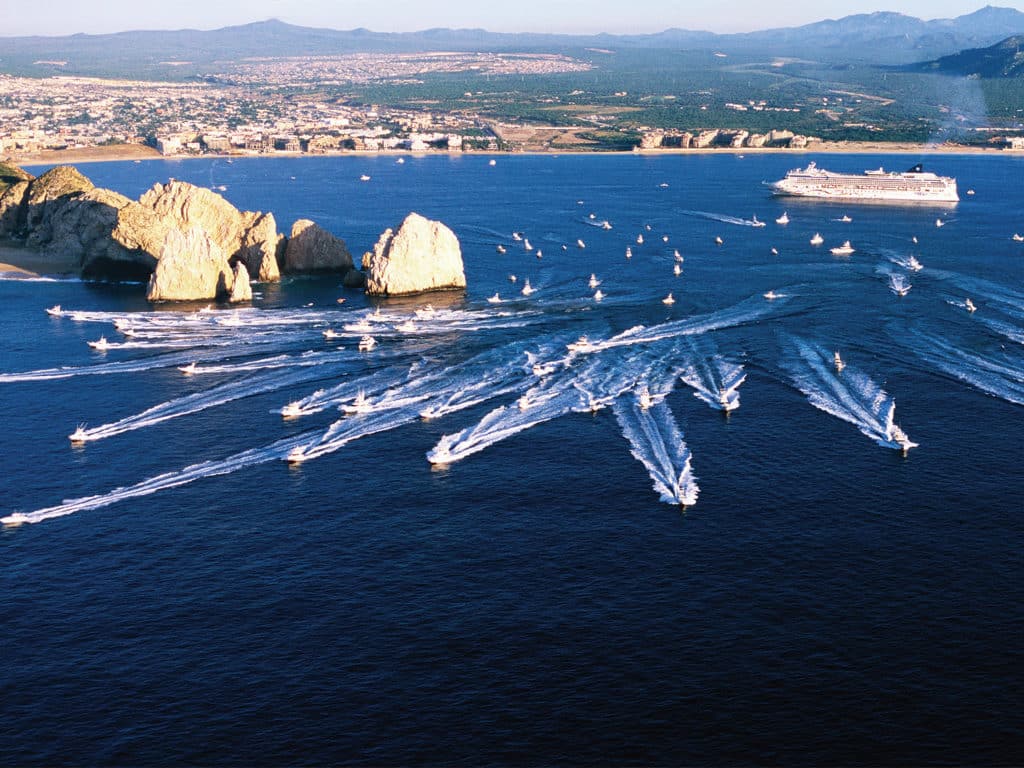
It’s first light, and there’s just enough of it illuminating the horizon. One by one the boats start heading out the inlet, their wakes rolling toward the jetties. This procession of boats—close to 100 of them—range from 40-foot center-consoles to 90-foot multimillion-dollar sport-fishing yachts, and are all heading offshore to the deepwater canyons, scattering wide in different directions. What are they after? A big payday, perhaps? They are after billfish, and these tournaments bring out all types of fishermen for that one chance, albeit remote, to win the jackpot. How much of a jackpot, you ask? Well, that depends.
Some of the largest payouts belong to America’s tournaments. Ocean City, Maryland’s White Marlin Open boasts itself as the world’s largest—and richest—offering some $1.85 million for the heaviest whitey at 97 pounds in 2020, with a total purse of almost $7 million at stake for the 433-boat fleet. Nearly $3.4 million was up for grabs in Morehead City, North Carolina, for 205 boats in the 62nd annual Big Rock Blue Marlin Tournament, where a 35-foot Contender brought in the heaviest blue of 2020, but the second-place team took home the most bucks, totaling $1,056,138.
Not to be undone by the United States, the Bisbee’s Black & Blue, held in Cabo San Lucas, Mexico, might not be the largest, but it actually might be the richest—handing over a cool $1.4 million in 2019 (no qualifiers were weighed in 2020) for the winning 577-pound blue marlin, an additional $1.3 million to second place, and $1.75 million to the third-place finisher. As a matter of fact, in its 40-year history, the Bisbee’s has written 18 individual checks toppling $1 million, six over $2 million and two over $3 million. And according to tournament director Wayne Bisbee, his biggest individual team check went to Bad Company in 2006: $3.9 million.
It’s easy to conceive how people see these astronomical payouts and assume there is a lot of money to be made participating in billfish tournaments. But truth be told, the money isn’t in the participation of these tournaments, or even the ownership of them; the greatest impact is found economically, especially for the communities in which they are hosted—they are the real beneficiaries. The scientific information that is discovered due to sampling, as well as the charitable organizations they support, is no less an integral part of the sometimes-controversial killing of billfish for money.

Fishing Economics
The National Marine Fisheries Service—the governmental agency responsible for the stewardship of America’s marine resources—estimates that approximately 11 million Americans participated in saltwater fishing in 2011, spending $27 billion on fishing tackle, equipment, and trip-related goods and services. Spending by saltwater anglers generated more than $70 billion in economic output, supporting more than 450,000 jobs.
In 2016, private vessels located along the Eastern Seaboard and Gulf of Mexico coastal states were estimated to have made over 87,500 fishing trips (tournament and nontournament vessel days) in pursuit of tunas, sharks, billfish and swordfish, each of which are named highly migratory species by the NMFS. And while fishermen spend a great deal of money in the pursuit of catching in general, the tournament operators were estimated to have brought in approximately $38.4 million in revenue against total costs of $32.4 million, plus $2.5 million in charitable donations.
When combined, these expenditures are estimated to have contributed over $232 million in total economic output to the United States economy, supporting 1,404 jobs, including $72 million in household income. When combined with recent assessments of the HMS for-hire recreational-fishing sector, and durable-goods purchases by recreational anglers fishing for the highly migratory species, the total annual economic contribution of HMS recreational fishing to the US economy is estimated to be over $510 million.
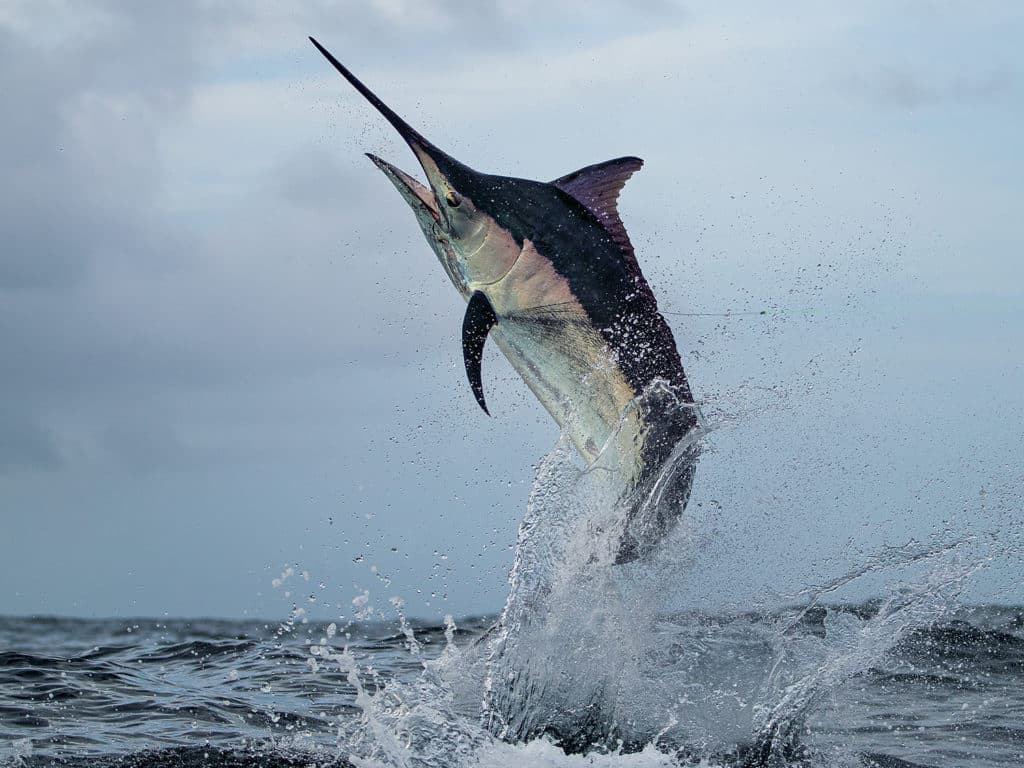
Fishing Jobs
As you walk down the dock of any marina during a major billfish tournament, you will see crews working diligently to prepare for what could be a life-changing win. They’re going after “the big one,” hoping to get lucky. It is here, thanks to Roman philosopher Lucius Annaeus Seneca, that the old saying “luck is what happens when preparation meets opportunity” couldn’t be more relevant.
It is in this tireless preparation where the people—ergo the jobs of captains and crews—perhaps, are the beginning to a tournament’s success. The captain must be sure the boat is in 100 percent working order. For most captains, this is a full-time position; he is employed to take care of the boat and make sure that everything works. His job doesn’t end with the boat, however; it’s often expanded to include the logistics of it: that all reservations are made, the crew has everything they need for them to fish a tournament without a hitch, and the owners enjoy themselves. But it hardly stops there.
If there is any kind of mechanical or service issues with the boat, it is the captain’s duty to secure the employment of subcontractors to help fix those problems. At this point, you begin to branch out to the blue-collar community: Mechanics are called to troubleshoot engine issues, refrigeration technicians might be called in to repair the master stateroom’s air conditioner, or a diver might be needed to clean the bottom so the boat is running on the smoothest surface in order to make the most efficient speed with the most economical fuel-burn for the competition.
The crew is responsible for making sure that all the tackle is ready for the would-be prize-winning fish. At first look, it’s a bit overwhelming when you consider all the tackle, dredges and teasers. But by breaking it down, you can see the Herculean effort that one puts in to have a chance at success. Each season, the rods and reels have to be serviced to be sure they are in perfect working condition: Replace bearings, grease the reels to run as smooth as a fine Swiss watch, and spool on fresh line—that some crews replace before each tournament—to ensure you stay connected to that winning fish.
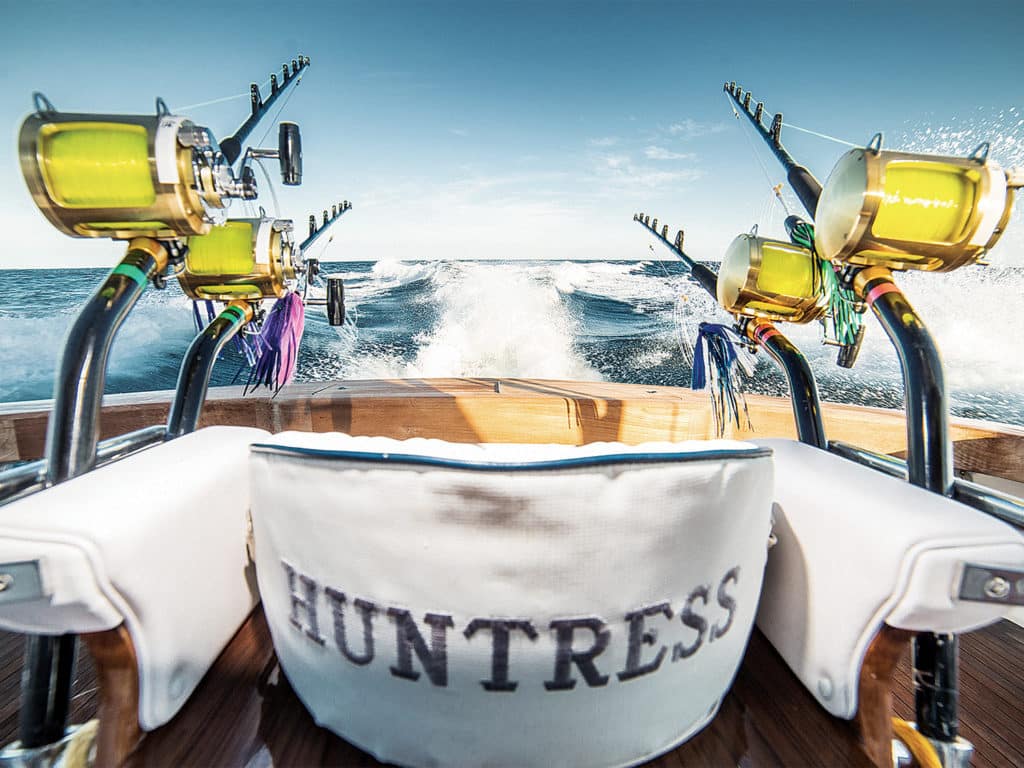
The tackle shops also look forward to tournament season, as they should. Teams begin the massive provisioning that includes not only the hardware and tackle that is needed to compete at the highest level, but also spools on spools of line, hooks, teasers, snap swivels, leader material and bait. The commercial-bait industry could hold its own category, considering all that’s involved in procuring quality baits just for trolling. It is mind-blowing when you think about it because the same parameters exist here as in sport fishing, such as the boat, crew and assorted maintenance support, etc. Bait procurement in and of itself includes many people who are employed to not only prepare and package the bait, but also includes the multitude of commercial fishermen who catch the sometimes three to four different species of it required for a big-game tournament, or even fun fishing: ballyhoo—likely millions of them—for trolling, tens of thousands of mullet for dredges, and Spanish mackerel for pitch baits and teasers.
Trickle-Down Hospitality
Robbie Carter of the Mississippi Gulf Coast Billfish Classic in Biloxi, Mississippi, says that the event hosts an average of 100 to 120 boats for its annual tournament, equating to 800 to 1,000 people, which includes a captains’ meeting and the always-talked-about downtown Ocean Springs Pub Crawl. When I asked why people fish his tournament, Carter says it’s because of the Southern hospitality and the casinos. “When they leave our event, they always say they like the way they were treated,” he says. The MGCBC is fortunate to be able to host all 100-plus boats at one marina, but it utilizes all five of the Biloxi casinos and hotels, with some 2,500 hotel-room nights being booked for the week of the event. Teams start showing up on the Monday leading up to the tournament, which brings a huge influx of dollars to the area’s restaurants, approximately 30 of them, according to Carter. That’s a lot of hospitality dollars.
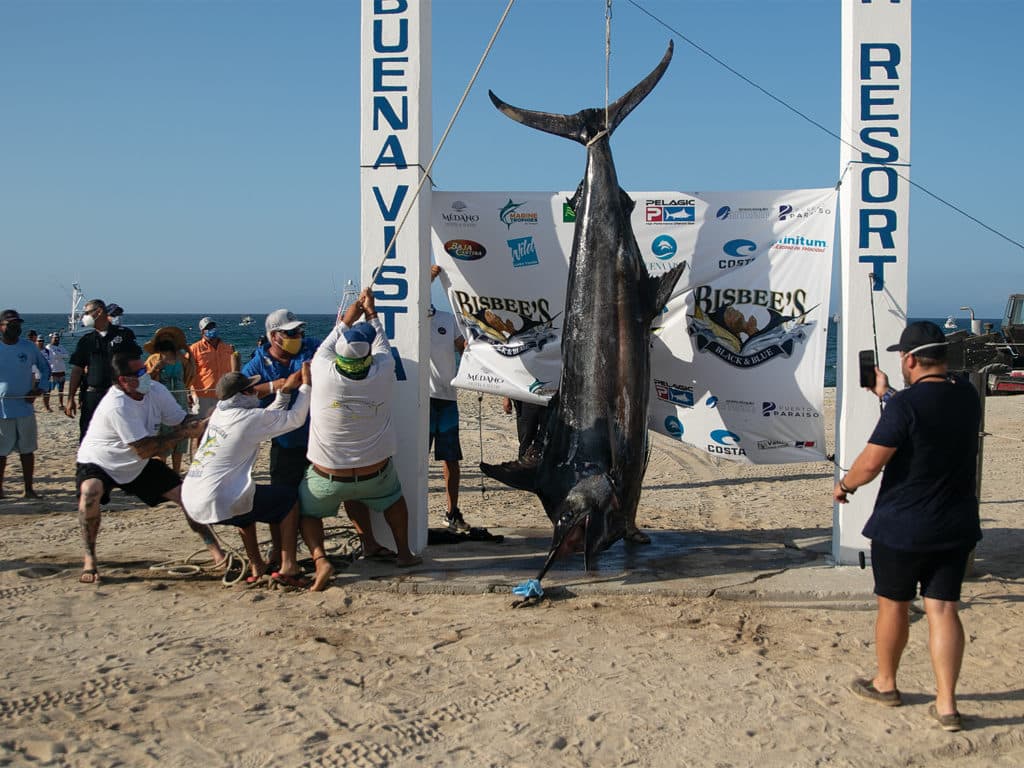
The MidAtlantic tournament is based out of Cape May, New Jersey, but it also employs a weigh station in Ocean City, Maryland, and hosts on average between 160 and 185 boats between the two locations. The majority of these boats stay in nine different marinas— four in Cape May and five in Ocean City. These marinas provide jobs for dockhands, dockmasters, administrators and fuel attendants. Tournament director Rick Weber says that teams fish the MidAtlantic for a lot of different reasons, tradition being one of them.
For almost 30 years, the MidAtlantic has been privy to some of the greatest white marlin fishing in the Northeast. On average there are 25 to 30 winners per tournament, which spreads the winnings among the fleet. “We had 10 winners of over $100,000 in 2020; we have a very broad payout structure,” Weber says. An event is put on each night of the tournament with a $200,000 catering budget; another $100,000 is spent on tables, chairs, tents and linens; and let’s not forget the people who are needed to set up and run those events each night, keeping in mind that number doesn’t include security, audio-visual teams and entertainment. “We host between 1,500 and 1,800 people annually,” Weber says. “From fishing to food to entertainment, we want everyone to have a top-notch experience during the MidAtlantic.”
And we can’t forget the people-movers. Before any of these events can begin, all those people need to get there, incorporating the fuel, airline and rental-car industries, private and public transportation, and vehicle-for-hire platforms.
The participants in these big-money tournaments make up the vast majority of the attendees, but still there are a lot of spectators who come to take in the events. “People love to see all the beautiful boats and big fish at the weigh scales,” Carter says. “Where else can you see mahi, wahoo and blue marlin?” These marlin tournaments give access to those who otherwise would never be able to experience anything like this. For the average spectator, this might be their only opportunity to see a big marlin, and observers can come to the scales to watch fish being weighed—and some even follow the teams that take part in these events as they would for any number of other sporting events.
“Offshore fishing is the quintessential American safari; you never know what you will see offshore,” Weber says, “and marlin remain the pinnacle catch of anyone’s big-game fishing career.” Giving access to sport fishing in this manner can often open a door that expands the sport by introducing new anglers, future tournament fishermen and (hopefully) new boat owners. And even though not everyone who wants to tournament fish owns a boat, they do want to participate in them, so this participation adds yet another layer to the tournament cake: the local charter fleet.
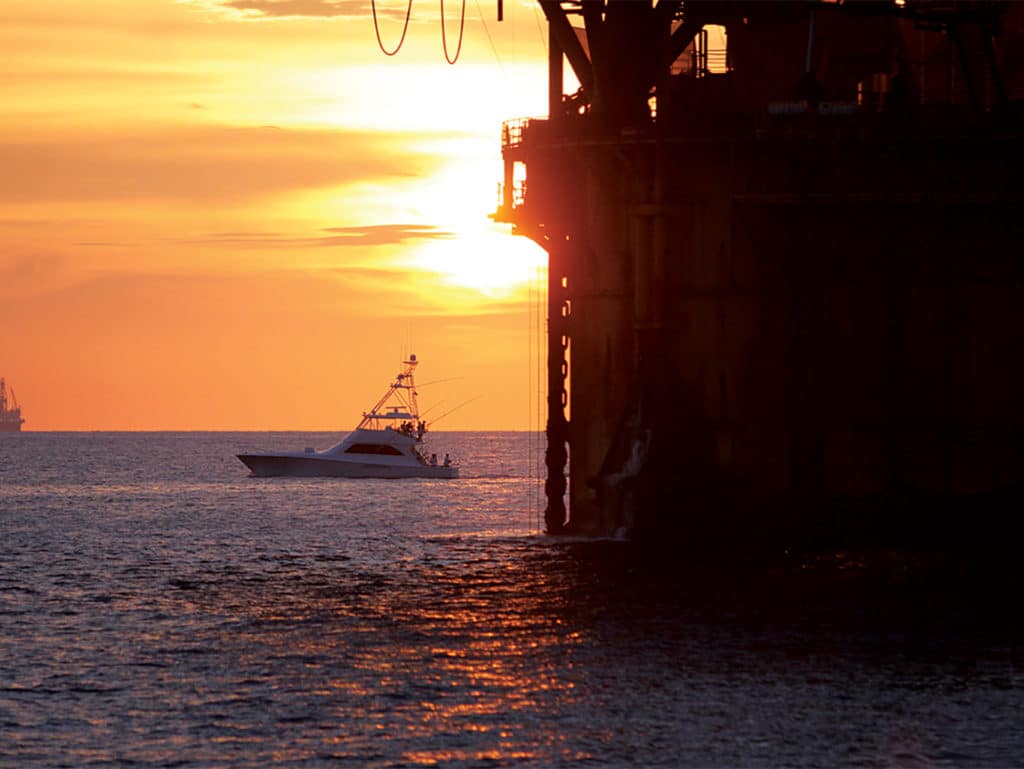
In the Name of Science
Tournaments are an extremely vital part of fisheries scientific research. Each boat is likened to a university undergraduate student—out on the water collecting data in the name of overall science. Tournament participants provide fish-species samples, giving scientists access to many essential data points for research. With so many boats fishing a specific area over a week’s time, it’s an extremely concentrated effort.
Billfish are sometimes referred to as rare event species because the areas they roam in the open ocean are so large that researchers have difficulty locating them. The number of human interactions with billfish during a tournament helps to provide the sets of data needed—whether the fish are released or harvested—and that scientific data is invaluable.
Dr. Jim Franks of the University of Southern Mississippi’s Center for Fisheries Research and Development at the Gulf Coast Research Laboratory has been working closely with the MGCBC to procure billfish samples since 1996, sharing the information with NMFS and NOAA, and aiding the biological study of billfish in the northern Gulf of Mexico. For many of the students who participate in sample collection with Franks, this work provides them the first opportunity to physically see a marlin up close. Without tournament-procured sampling, studies like these would not be able to take place on a scale of this magnitude. DNA, reproduction-system, stomach-content and spine samples are taken to further educate scientists on the lives of billfish.
Billfish spines help determine the age of the fish, while stomach contents determine favorite prey items—including mahi, several varieties of tunas, herring, and fish that frequent sargasso weeds such as bar jacks and tripletails—and reproduction-system samples determine sex and reproductive maturity. Billfish specimens have also helped Franks and his colleagues in studying the eyes of blue marlin, and bill samples provide information to determine the role it plays in a marlin’s life.
The MidAtlantic’s Rick Weber has been working with Dr. John Graves and the Virginia Institute of Marine Science for over 30 years, providing access to all the billfish that come to his weigh station. Every single marlin is examined and samples are collected for scientific research, contributing to the knowledge we now have of not only blues and whites, but also aiding in the correct identification of roundscale spearfish as it pertains to its misidentification with white marlin.
Even with the billfish harvested in the MidAtlantic, the release rate is 95 to 97 percent year after year, and MGCBC’s Carter says his 2020 event harvested only four blue marlin, releasing a confirmed 107. But the science behind conservation is never-ending.
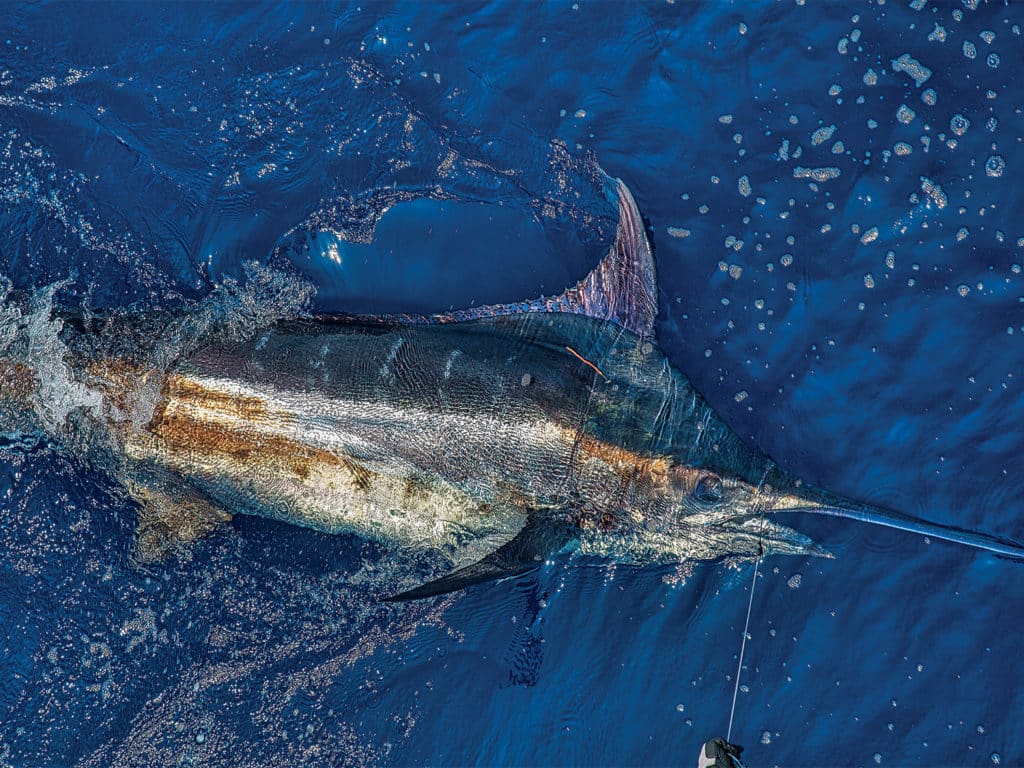
In 1986, Winthrop P. Rockefeller, Dr. Eric Prince and 50 others founded The Billfish Foundation with a mission to conserve billfish worldwide. “TBF was established because anglers, scientists and fishing clubs wanted to know more about billfish,” says Peter Chaibongsai, director of conservation programs at The Billfish Foundation, “and TBF wanted to ensure that billfish would be properly managed at the domestic and international level so future generations could enjoy the sport.”
The biggest contributor to the conservation, preservation and scientific research of billfish would be the community that utilizes the billfish resource the most: the sport-fishing community. Individuals, organizations and tournaments that support TBF are the backbone of the foundation. Tournaments help TBF by providing a venue for outreach to the community, often naming TBF as a direct grantee of certain monies raised during the event or helping to provide the foundation with direct access to the participants for fundraising opportunities during the event.
“The fact that we have a healthy resource means there is a positive direct impact on the sport-fishing community,” Chaibongsai says, adding: “We support all tournaments that have strong conservation in mind and abide by and promote the industry correctly.” Of course, the real heirs of all the work contributed by TBF are the fish themselves.
Similar to an iceberg, where only a small portion is seen from above, big-money billfish tournaments have a lot going on underneath, and many lives, businesses and industries are affected for the good by great events like these.
So the next time you are looking up at a big marlin at the weigh station of one of these tournaments, remember: She sacrificed her life, although unknowingly, for the survival of her species. And as you reflect on that sacrifice, also consider our own species, and just how far-reaching that one fish truly is.
